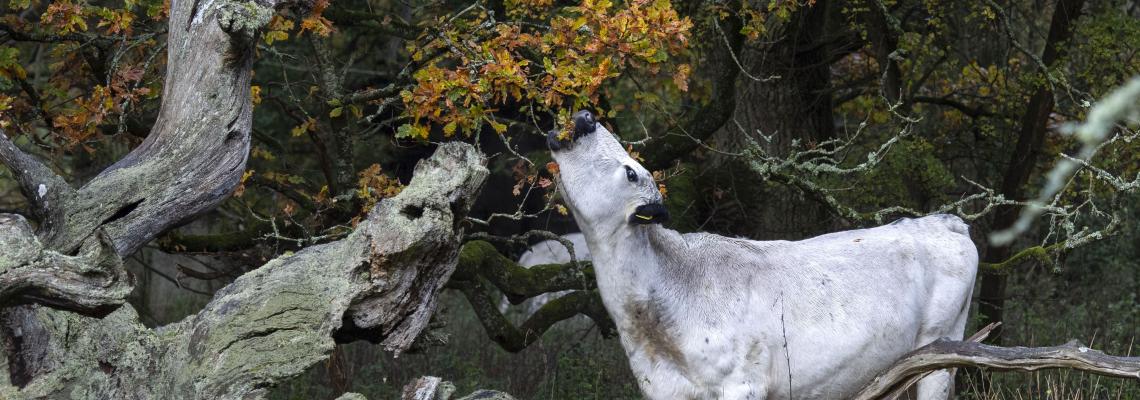We're welcoming British White Cattle onto the Blenheim Estate
We're welcoming a herd of British White Cattle onto the Blenheim Estate, to protect our ancient oak woodland.

Forty-five cattle, including twenty-one cows, twenty-three calves and Sebastian the bull have been released into High Park, a private, wooded area of our 2,000-acre Park that was orginally created as a deer park by Henry I.
It’s the first time the woods have been grazed by livestock for more than a century we hope that their re-introduction will encourage new tree growth.
High Park is home to the greatest number of ancient oak trees anywhere in Europe. Around 90% of the woodland is made up of oak trees and it is thought that at least 60 of them date back to the middle ages. It has also been recognised as one of the most biodiverse habitats in the UK.
“The cattle are a traditional and low-tech way to control the growth of bracken within the woods,” said our Herdsman, Richard Tustian.
“Historically livestock would have roamed across much of the Estate, including the woods, and by bringing them back we’re hoping to ensure these incredibly important ancient oak woodlands continue to survive and prosper for centuries to come.
“By trampling down the bracken and other undergrowth they will clear spaces for acorns from the ancient oaks to germinate and grow,” he added.
The modern British White cattle breed can claim direct links with the ancient indigenous wild white cattle of Great Britain.
Early in the 20th Century, the total number of herds had dropped to just seven with less than 150 individual cattle remaining. However today, thanks to a resurgence in interest in rare and heritage breeds their numbers have increased more than ten-fold.
The reintroduction of the cattle is part of our new Land Strategy - a plan that explores innovative ways to protect, utilise and open access to our estate over the coming years.